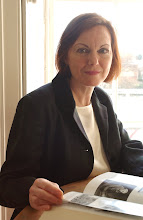 Less is known of Jane Bell, though in 1831 she was caught up in a scandal. Society doctor John St.John Long was accused at the Old Bailey of murdering one of his patients , by not providing the proper treatment. After lengthy submissions by leading physicians, Long was found not guilty, thanks largely to a string of character witnesses, including Mrs Bell. She also supported worthy causes connected with her husband’s interests, including a fund for the building of a hospital for sick sailors.
Less is known of Jane Bell, though in 1831 she was caught up in a scandal. Society doctor John St.John Long was accused at the Old Bailey of murdering one of his patients , by not providing the proper treatment. After lengthy submissions by leading physicians, Long was found not guilty, thanks largely to a string of character witnesses, including Mrs Bell. She also supported worthy causes connected with her husband’s interests, including a fund for the building of a hospital for sick sailors.The Bell family were followed in the 1850s by John Petty Muspratt:, a banker and director of the Hon. East India Company, who died at home in 1855.
The Novelli family followed, bringing some scandal to No. 43. Augustus Novelli was already an eminent and well-off member of the Royal College of Physicians when in 1852 his father died, leaving him a fortune of £50,000 from the family’s business interests in Italy and the Middle East. Now a very wealthy man, Novelli gave up his medical practice at Middlesex Hospital and took over the family banking and trading business. With a country house in Aberystwyth and the family business trading out of London and Manchester, Augustus was doing very well. The 1861 census shows his family – wife, two daughters and a son – being looked after by eight servants at 43 Russell Square, and Augustus used his money to buy influence and prestige in the world of the arts. He befriended Tennyson and Dickens, and soon gained a reputation for being a man of exquisite taste and culture. He was a gifted pianist, commissioned works of art and was a prominent donor to worthy artistic causes. To the pre-raphaelite sculptor Thomas Woolner he was “one of the most fascinating men I have ever met, he has the soul of a poet with the profoundest comprehension of business in its minutest details”. Novelli may have befriended the pre-Raphaelites (the Brotherhood was founded in Gower Street, Bloomsbury). He was the first to own, and may have commissioned, the painting illustrated above, entitled 'Fairlight Downs: Sunlight on the Sea' by William Holman Hunt. The painting was purchased by Novelli in November 1858 for £120.
Novelli was also a close friend of James Brooke, the “White Rajah”, absolute ruler of Sarawak in the East Indies, who called him “Prince of British Merchants”.
However, this wealthy well-connected family lived with a terrible burden. An all-too public scandal had engulfed the family in 1850. Augustus’s older brother Lewis had died, leaving a widow, Harriet, and another brother, Alexander, as his executor. Alexander moved into Harriet’s house and made no secret of his desire to marry her, though she rejected his advances. Then tragically one morning, the servants found the strangled body of Harriet Novelli with her clothes all askew and, nearby, the body of Alexander, who had hanged himself. The relatives made an attempt to lessen public interest by claiming insanity was widespread in the family, but the tabloid press wallowed in sordid speculation. The scandal may have been the cause of a personal tragedy for Augustus; his wife Helen went into labour prematurely and their daughter was still-born.
